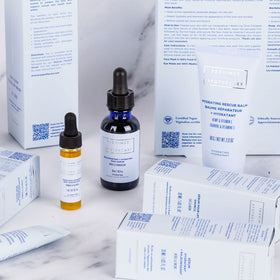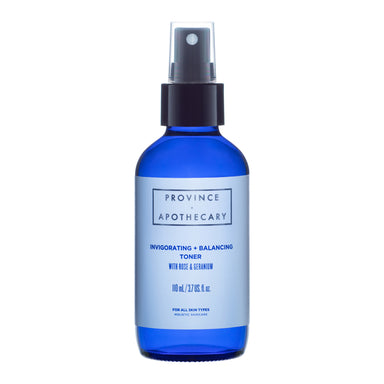One of the most common questions we get in our skincare clinic is people asking for their skin type. Despite having lived in the same skin our whole lives, it can be difficult to get perspective to learn exactly what our skin is trying to tell us.
As the season shifts to cooler and drier days, we thought we’d clear up one of the most common misconceptions about skin: there’s a difference between dry and dehydrated skin. In this article we’ll take a look at the main differences, characteristics, symptoms, and management tools for both dry and dehydrated skin.
Dry Skin
Dry skin is a skin type that lacks oil. People with dry skin are typically born with fewer sebum or oil-producing glands, which can result in common symptoms including rough, flakey, itchy, red and/or sensitive skin. The idea behind a skin type is that it is inherent to your physiological composition, meaning there isn’t necessarily a ‘cure’ for dry skin so much as there are tools for managing dryness. The goal with dry skin is to moisturize with oils that penetrate deep into the skin to lock in moisture, form a protective barrier, and ultimately help balance the skin’s innate dryness. One of the best things you can do to manage dry skin is switch to oil-based products. See the chart below for specifics and product recommendations.
Dehydrated Skin
Dehydrated skin is a skin condition that occurs when the body is lacking water. Skin conditions are often a result of external factors like weather, environment, diet, and caffeine consumption. Unlike dry skin (a skin type), dehydrated skin is a temporary condition that can be both managed and avoided. This means that any skin type can have this condition. For example, you can have both oily and dehydrated skin; both dry and dehydrated skin. Common symptoms of dehydrated skin include; dull complexion, congestion (blackheads), fine lines, and flakiness. The goal with treating dehydrated skin is to increase your water intake to achieve a plump, supple complexion. There are a number of ways to do this including; increasing water consumption, decreasing coffee and alcohol intake, using products with ingredients like rose water, and avoiding products that tighten the skin. One of the best things you can do for dehydrated skin is gently exfoliate your face 2-3 times weekly. This helps remove dead skin cells, alleviate congestion, and improve your skin’s overall absorption of products.
Here’s a comprehensive breakdown of our recommended essential oil-based products for managing dry and/or dehydrated skin:
__________________________
You may also like...
 Best Seller
Best Seller






